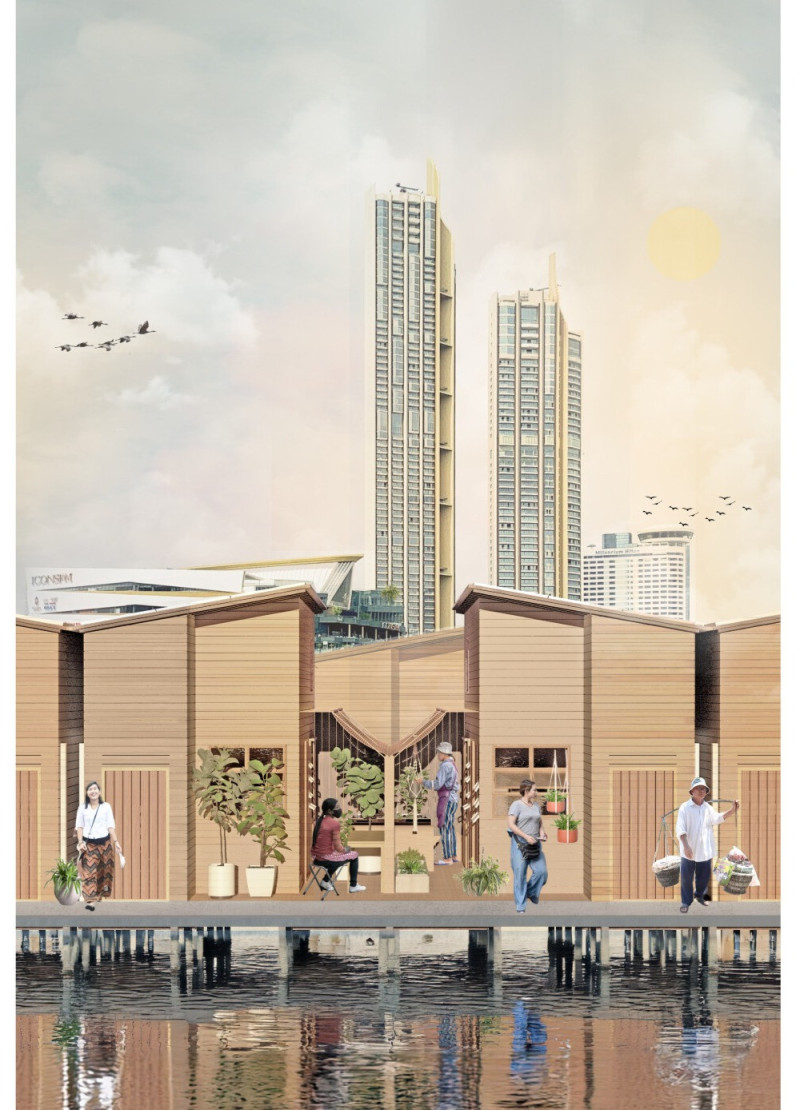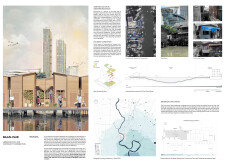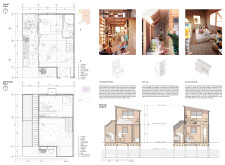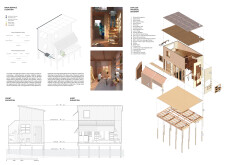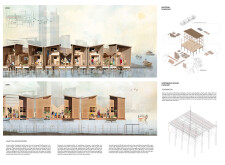5 key facts about this project
### Project Overview
The Baan-Pair proposal addresses the challenges of gentrification and housing insecurity in Khlong San, a district of Western Bangkok along the Chao Phraya River. The design aims to promote community integration while protecting existing residents from displacement amid ongoing development. By combining environmental responsiveness with social connectivity, the proposal offers innovative architectural solutions tailored to the specific context of the area.
### Spatial Configuration
The design incorporates open-plan living spaces that facilitate interaction among residents, with designated communal areas such as verandas and multifunctional spaces that extend living areas outdoors. The efficient use of space is paramount in densely populated neighborhoods, with features including living areas that double as gathering spots and service back-locations to streamline waste and water management. This configuration enhances user experience by fostering a sense of community while ensuring functionality.
### Environmental Strategy
To address Bangkok's flooding risks, the Baan-Pair project implements a comprehensive environmental strategy. This includes an advanced water management system featuring gutters and filtration to effectively handle rainwater, as well as elevated housing designs that maintain stability and livability during extreme weather events. The use of amphibious foundations allows buildings to adapt during flooding, thus reinforcing community resilience and capacity to respond to climate challenges.


